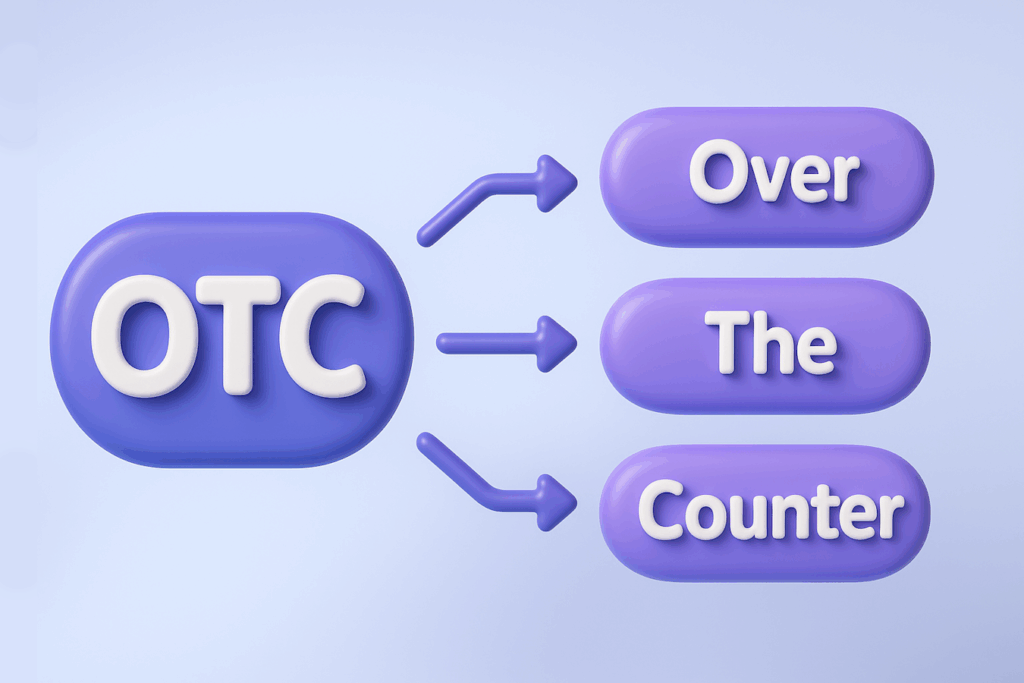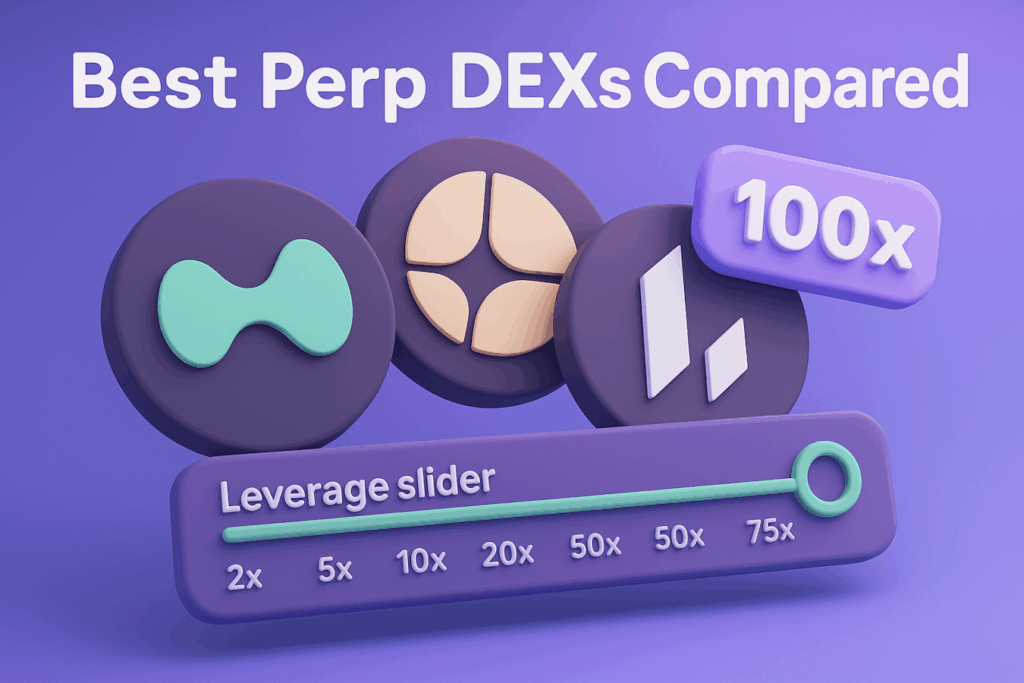share
Identity is not what you say about yourself but what others say about you… or is it?
The Shifting Landscape of Identity Verification
The notion of identity has had an epic voyage through space and time. Digital identity verification has proven invaluable since its humble origins all the way to the present day. Our ancestors adorned themselves with distinctive jewelry, names, and even tattoos, laying the foundation for individuality. Back then, one’s identity was as simple as a face and a voice. These days, with the wide use of digital identity, we can’t just say, “Trust me, I’m me!” and expect services and legal entities to believe us. We need third parties and central authority to validate our claims about who we are. However, as we speak, the paradigm of identity verification is undergoing a momentous shift. This is where decentralized identity steps in, as it revolutionizes the concept of digital identity in our digital age.
The Importance of Digital Identity Verification in the Digital Age
In the digital jungle, digital identity verification has become our survival instinct. It’s our firewall against fraud, identity theft, and unauthorized access to sensitive information. It acts as the bedrock of secure and reliable digital services, be it online banking, e-commerce, or social media platforms such as those adopting decentralized identity. Furthermore, it’s our ticket to regulatory compliance, reassuring the world that we are who we claim to be and that organizations are playing by the rules. In essence, digital identity is our passport to secure, private, and seamless digital living.

Understanding Decentralized Identity and Self Sovereign Identity
Today’s digital landscape is a battleground marred by information centralization. Our personal data — messages, documents, financial information, and more — is locked away in fortresses of databases owned by the services that we use. Centralized identity management systems hold the keys to our most intimate digital identity details — home addresses, phone numbers, passport information, and more. They reassure us of our legitimacy, but our data is held captive within the labyrinth of company IT infrastructures. The puppeteers behind the scenes are only the organizations themselves, privy to how our digital identity data is being manipulated and who’s privy to it.
However, should a breach occur, we’re left helpless in the face of bad actors, with our digital lives exposed for plundering. Decentralized identity systems and self-sovereign identity offer a new paradigm to tackle these challenges. Adding to the murky waters, certain services request for user consensus to share personal data with mysterious and often undisclosed third parties, often leaving us in the dark about their use of our digital identities.
Decentralized identity seeks to break these chains.
As we surf the waves of the early-mid 2020s, a seismic shift is shaking the very core of how digital identity is managed and verified. Blockchain technology and decentralized identity providers are rewriting the rulebook, empowering individuals to become the sovereign gatekeepers of their own digital identities through decentralized identity solutions.
In the brave new world of decentralized identity, traditional centralized identity management systems undergo a metamorphosis. It splits into two dynamic entities: the issuer and the holder, liberating individuals from the chains of centralized authorities.

The power of decentralized identity and self-sovereign identity systems lies in their democratic ideals. No single entity lords over others. Instead, everyone partakes in fair play when implementing decentralized identity management. This egalitarian landscape can trigger a ripple effect, amplifying the collective strength of the network with each new participant.
Enter Decentralized Identifiers (DIDs)
Imagine a world where your information isn’t a prisoner to a company’s database but free and secure on a blockchain or distributed ledger, thanks to decentralized identity. Enter the realm of decentralized identifiers (DIDs) – the new step in the evolution of identity verification. Decentralized identifiers are akin to non-custodial crypto wallets, using public and private keys to authenticate identity within decentralized identity solutions rather than merely authorizing transactions. No need for IDs during registration or remembering convoluted username and password pairs to access each one of your accounts.

Here’s how decentralized identity works.
Imagine a digital world named EdoBloc, where all sorts of digital creatures happily live and interact. In EdoBloc, a vivid digital world inhabited by diverse digital creatures, each resident is uniquely identifiable through markers known as “Didel Signs.” Whether it’s a CryptoKitty, Magic Coin, or a Virtual Assistance Sage, all members need a Didel Sign for community validation.
DID Creation
When a new inhabitant, say a CyberPlant, wishes to acquire its Didel Sign, it generates a unique Decentralized Identifier (DID). This identifier securely distinguishes the CyberPlant as an individual EdoBloc resident, serving as an access point for its essential information.
DID Document and Public/Private Keys
The CyberPlant proceeds to create a DID Document with details such as its public keys for secure communication, service endpoints to help others find it within EdoBloc, and metadata like ideal watering schedules or sentient capabilities. The CyberPlant keeps its private keys securely concealed, known only to itself.
Distributed Ledger or Decentralized Network Connection
The DID Document is subsequently registered on EdoBloc’s “Infinite Registry,” a decentralized network utilizing Distributed Ledger Technologies (DLTs). This registry guarantees public verification for all digital EdoBloc inhabitants, promoting mutual trust.
Resolution
Suppose a Digital Dragonfly desires to establish communication with the CyberPlant. The Dragonfly performs a lookup on the Infinite Registry to locate the CyberPlant’s DID and DID Document. Upon retrieving this information, the Digital Dragonfly uses the public keys to initiate secure, encrypted communication with the CyberPlant.
Update, Revoke, and Rotate
As the CyberPlant matures, updates to its DID Document become necessary. It may need to increase its connections by adding new service endpoints or strengthen its identity by rotating key pairs. These modifications are documented on the Infinite Registry, ensuring the CyberPlant’s information is up-to-date and available for EdoBloc’s lively community members.
How would this work IRL?
Decentralized Identifiers (DIDs) and decentralized identity could soon become an everyday reality, transforming the way we manage and share our personal data. Picture this – your bank, government, or alma mater serving as a trustworthy verifier of your personal information. Once verified, they issue a digital attestation or a credential linked to your unique DID, safely stowed away in your personal decentralized identity vault.
Imagine a world where your university isn’t just an institution where you learn but also a verified issuer of your academic laurels. Your entire scholastic saga – transcripts, degrees, certificates – is stored in a decentralized, impregnable registry, ready at your beck and call.
Job hunting could be a breeze in this new reality. Decentralized identity would turbocharge the verification process for employers. No more waiting for traditional education verification; employers could speedily confirm your diploma and academic laurels via a QR code linked to your DID. This QR code would serve as a secure gateway to your verified credentials, annihilating the red tape that often plagues traditional job application procedures.

But that’s not all. This system would be a bastion of your privacy. Potential employers or others would be kept at bay, unable to access your entire data stash unless you choose to permit it. With DIDs and decentralized identity, you hold the reins, deciding what information to share by creating selective and limited verification credentials.
Decentralized identity could also grease the wheels of global interactions. Imagine seamlessly using your verified credentials across different legal territories. It would revolutionize international transactions, like applying for jobs overseas, which usually involves a labyrinth of paperwork.
In essence, the widespread adoption of DIDs and decentralized identity could herald a new era of efficiency, security, and control over personal data. It could be a game-changer for industries like education and employment, simplifying processes, eliminating redundancy, and fortifying data privacy.
Blockchain and Beyond Shaping the Future of Decentralized Identity with Distributed Ledger Technologies (DLTs)
While blockchain networks often steal the limelight in the pursuit of decentralized identity systems, they are just the tip of the iceberg. A myriad of distributed ledger technologies (DLTs) are waiting in the wings, ready to propel the concept of decentralized identity onto a whole new playing field. Notable examples like Hashgraph and the burgeoning Decentralized Identity Foundation are pushing the boundaries of how we perceive and shape digital identities.
Harnessing the Might of Hashgraph for Sovereign Digital Identities
Picture a vibrant, pulsating business hub, teeming with people pouring in and out of sleek glass towers. Each individual needs to verify their identity to access and exit high-security zones. Enter Hashgraph, with its sophisticated consensus algorithm, serves as the backbone for a startup’s groundbreaking decentralized identity system that hands over the reins of digital identity management to the users.
Take Alice, a high-flying executive, for instance. She can carve out her unique decentralized identifier on this avant-garde platform, with Hashgraph’s unparalleled speed, transparency, and security being her allies. Alice can grant her employer selective access to her professional details, like work experience, credentials, and emergency contacts. Hashgraph’s robust gossip protocol and practical Byzantine Fault Tolerance (BFT) ensure that Alice’s updates to her decentralized identifiers are disseminated quickly and securely without any extra cost or inconvenience.
IOTA’s Tangle: A linchpin for IoT-powered Decentralized Identities
Visualize a sprawling metropolis where a futuristic project to construct a “Smart City” is taking shape, powered by IOTA’s Tangle. Billions of IoT devices are interwoven to monitor and manage civic amenities like public transit, utilities, and surveillance systems. Each of these devices wields a decentralized identifier, fueled by IOTA’s distinctive Directed Acyclic Graph (DAG) approach, and uses verifiable credentials to help users access essential services.
Consider an autonomous vehicle navigating through this connected urban landscape. It leverages IOTA’s zero-fee transaction feature to establish its decentralized identity sans any recurring costs. Utilizing IOTA’s Masked Authenticated Messaging (MAM), the vehicle exchanges encrypted, secure messages with charging stations, traffic controllers, and fellow vehicles, ensuring enhanced safety, privacy, and transparency.
Holochain’s Trailblazing Contribution to Decentralized Identity
In a world striving for sustainability and energy efficiency, Holochain emerges as a perfect platform for peer-to-peer applications in decentralized identity management, shrugging off the need for centralized control. Picture an international NGO tasked with verifying and authenticating the identities of thousands of global volunteers and employees via decentralized identifiers.
The NGO adopts a Holochain-powered decentralized identity system, effectively spreading the workload across the network. When Bob, a volunteer, signs up, he creates and manages his decentralized identifier without causing a logjam in the network or risking privacy concerns.
By embracing Holochain’s agent-centric model, the NGO bypasses the usual hierarchical hurdles and bureaucratic bottlenecks inherent in large organizations. Consequently, volunteers and employees gain direct control over their data access and sharing, fostering trust and verifiable credentials as a cornerstone while sparking a fresh wave of dApp innovations tailored to the evolving needs of decentralized identity management.
Decentralized Identity: Major Hurdles on The Way To A Brighter Future
Decentralized identity systems are akin to a vibrant social gathering. Imagine a room buzzing with attendees wielding ID cards of different types—driver’s licenses from various states, for example. The party’s success hinges on the organizer’s ability to accept and recognize these varied IDs. Similarly, the challenge in the world of digital identities is to create a system that acknowledges and accepts the plethora of ID formats issued by diverse authorities. To create such a universally accepted identity system, we need a symphony of cooperation among governments, businesses, and users, harmonizing the protocols across different systems for seamless integration.
Striving for the User-Friendly Utopia
In the digital realm, user experience is king. Decentralized identity platforms should be as user-friendly as a neighborhood bookstore, inviting people of all tech-savviness levels to step in and explore. The task is to craft efficient systems that strike the perfect balance between simplicity and accessibility, encouraging every user to adopt them with ease. Picture an elderly farmer, digitally naive, navigating the platform effortlessly—this is where we need to be. Intuitive user interfaces, comprehensive user education programs, or assisted onboarding processes may be the stepping stones to achieving this user-friendly utopia.
Building Fortresses of Trust
When we talk about digital identities, security and privacy leap to the forefront of concerns. Like a high-profile celebrity attending exclusive events, every user must have unwavering trust in the system’s ability to safeguard their sensitive data, such as personally identifiable information. To earn this trust, we need to incorporate robust measures and privacy-enhancing features within the systems. Techniques like zero-knowledge proofs, robust encryption methods, and secure access controls can fortify this trust, ensuring seamless experiences while preserving privacy and safeguarding personally identifiable information.
Keeping Things on Lock
Like a keeper of a treasure chest, managing private keys in a decentralized identity system is a daunting task. Mismanagement or loss of these keys could lock users out of their digital identities and associated services. Thus, crafting secure, user-friendly key management solutions is of paramount importance, and potential solutions could include hardware-based key management, biometric authentication, or trusted custodial service integration.
Pathfinding in the Regulatory Jungle
Regulatory challenges in the decentralized identity terrain are like navigating a maze of complex data protection laws that vary from country to country. Crafting globally interoperable solutions that also respect stringent privacy rules is a tall order. Collaborating with governments and regulatory bodies to tweak policies or introduce situational exceptions could help bridge this divide, ensuring user privacy isn’t compromised while facilitating adoption.

Painting an Inclusive Digital Heaven?
Addressing digital divides is like trying to paint a rainbow in a monochrome world. The solutions must accommodate varying degrees of internet access and technological capabilities. In a rustic village with unreliable internet access and antiquated technology, decentralized identity solutions must be as inclusive as an open community fair. Techniques like offline access mechanisms, multiple device support, and low-bandwidth options can be the paintbrushes that color this inclusivity.
Carrots for Adoption
Incentives for stakeholders in the decentralized identity platform are like juicy carrots that lure the rabbit into the trap—encouraging widespread adoption and ensuring a thriving ecosystem where everyone benefits. Incentive models that align stakeholder interests could include lower transaction costs, enhanced security, and improved user experiences. Think of attractive offerings like grants, tax benefits, or reduced fees for participants.
Taming the Goliath of Traditional Institutions
Resistance from traditional institutions such as banks or government agencies could act as stumbling blocks in the path of decentralized identity adoption. Persuading these institutions about the benefits of decentralization, highlighting improved security and reduced dependence on centralized entities, is crucial. Transition strategies that mitigate risks and leverage existing connections can act as a smooth runway, propelling the adoption of decentralized identity systems into the digital stratosphere.
Building Diplomatic Bridges
Trust frameworks serve as diplomatic bridges, uniting territories with disparate legal landscapes and stipulations. They play the role of glue, cementing cooperative endeavors in carving out trust frameworks – such as concord and consensus on data interchange, identity substantiation, and dispute arbitration mechanisms. These concerted efforts are the lifeblood of decentralized identities. Imagine two nations, each adhering to starkly different legal frameworks yet adventurously exploring neutral, decentralized identity validation methods for their citizens – a testament to the power of cooperation.
Scalability Matters: Sky-High as the Bare Minimum
Lastly, scalability isn’t desirable. It’s indispensable. Picture a sprawling metropolis where millions deploy decentralized identities daily for public transit and sundry services. The system’s demand is as towering as the city’s skyline, requiring scalability and resilience. Cutting-edge technologies like sidechains, sharding, or layer 2 solutions are the superheroes of this narrative, vanquishing bottlenecks and ensuring a steadfast, spry system.
The Digital Decentralization Party: Tech Bigwigs Making Waves
The digital decentralization movement has been steadily gaining traction, backed by renowned figures from various fields. These visionaries foresee a user-centric digital world where individuals wield the ultimate power over their personal data.

Sir Tim Berners-Lee, the genius behind the World Wide Web, is a fervent supporter of digital decentralization. His new project, Solid, embodies his mission to “reshape the web as it was originally envisioned” and to “restore power and agency to individuals,” as he once noted through Inrupt. By constructing a decentralized framework, Berners-Lee strives to put users at the helm of their digital lives.
Similarly, cryptography expert Christopher Allen endorses decentralized identity concepts, advocating for self-sovereign identity and control over personal data. As a prominent voice within the World Wide Web Consortium (W3C), Allen champions decentralized identifiers (DIDs) that “enable a new layer of digital trust,” according to his statements for the W3C DID Working Group.
Andreas Antonopoulos foresees an era where decentralized identity systems employ blockchain to facilitate “more freedom, privacy, and self-respect,” as he shared with O’Reilly Radar. Such an approach would further empower individuals in the digital realm.
Mattereum founder Vinay Gupta underscores the necessity for users to control their digital identity systems. Instead of allowing a few dominant entities to possess data, Gupta envisions that users should serve as “kings and queens” in charge of their own information and privacy, as he articulated in communications from Mattereum.
Lastly, renowned legal expert Elizabeth Renieris addresses the crucial role that decentralized identity solutions play in a world riddled with surveillance and data breaches. Expressing concerns about the prevailing model’s facilitation of excessive data collection, she calls for a transition to decentralized systems in order to safeguard privacy rights, as she emphasized during her time at Harvard Law School.
Together, influential leaders and brands are forging a path toward a future where decentralized identity plays a starring role, returning power to the users. Pioneered by these technology visionaries, digital decentralization harbors the promise of a world where everyone holds the key to their own digital identity.









